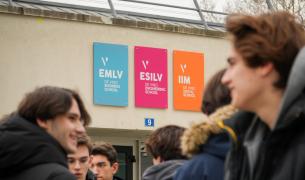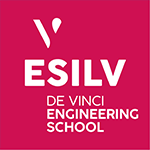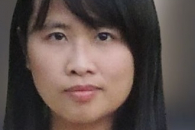L’Axe de recherche « Nouveaux Matériaux, Systèmes Intelligents et Entreprises innovantes » organise ses travaux autour de quatre sous-axes de recherche majeurs :
La recherche de matériaux intelligents fonctionnels représente un défi majeur dans de nombreux domaines tels que l’automobile, l’aéronautique et la biomédecine. Dans ce contexte, nos chercheurs collaborent en mettant en commun leur expertise pour concevoir des métamatériaux bio-inspirés architecturés et des smart matériaux, depuis la phase de conception numérique jusqu’à l’optimisation des propriétés structurales et/ou fonctionnelles, en passant par la fabrication et la caractérisation expérimentale. Les technologies développées réunissent des compétences dans plusieurs domaines, notamment la modélisation et simulation numérique multi-échelles, la simulation par éléments finis, l’Intelligence Artificielle, l’impression additive, le smart manufacturing et les méthodes expérimentales.
Dans le cadre de la transformation numérique, la sécurité digitale joue un rôle primordial. Au sein de l’Axe ce thème englobe la cybersécurité, la sécurité des réseaux, la résilience et la cryptographie, revêtant une importance significative avec une visibilité à la fois nationale et internationale. Le deuxième thème porte sur les systèmes intelligents, qui sont des composantes essentielles de la transformation numérique. La recherche au sein de l’Axe dans ce domaine se concentre sur les interactions entre l’humain et la machine, que ce soit du point de vue visuel, audio et/ou tactile, ainsi que sur la robotique, les objets connectés, l’IoT, la réalité virtuelle, et la e-santé, en lien avec les récentes avancées de l’intelligence artificielle.
La manière d’organiser l’innovation et l’impact des innovations sur nos vies sociales, comportementales et organisationnelles revêtent une importance cruciale tant sur le plan théorique que pratique. Nos membres excellent à l’échelle internationale dans la compréhension et l’exploration du développement de nouveaux produits et processus, ainsi que dans d’autres domaines tels que la gestion des innovations technologiques, l’encouragement du talent, l’optimisation de la chaîne d’approvisionnement, la gestion avancée des entrepôts et des opérations, la promotion de marques, et l’impact qu’ils apportent aux individus, aux groupes et aux pays grâce à ces innovations. Nous avons également acquis une expertise dans le financement, le recrutement et le développement d’entreprises innovantes (entrepreneuriat et création de nouvelles entreprises).
Nous sommes très intéressés par la recherche de stratégies qui favorisent, promeuvent et gèrent les innovations dans ce monde numérisé et hyper-connecté. Nos membres se consacrent à l’étude de la stratégie numérique et de la transformation numérique, les ethnographies des phénomènes numériques (par exemple, la ludification, la blockchain, la gestion algorithmique), la psychologie dans un contexte numérique (affects et émotions dans l’espace numérique), le marketing numérique, les interactions numériques et sociales (via les dispositifs portables, la robotique, l’apprentissage profond, les jeux, etc.), ainsi que par l’analyse des modèles économiques existants et de l’évolution des entreprises innovantes.
Parmi les projets interdisciplinaires, nous incluons :
L’équipe d’enseignants-chercheurs Nouveaux Matériaux, Systèmes Intelligents et Entreprises innovantes.
L’ensemble des travaux des enseignants-chercheurs Nouveaux Matériaux, Systèmes Intelligents et Entreprises innovantes.
Du, Jingshu; Wu, Liang; Liu, Heng
Intrinsic or Normative Pressure and Green Management: The Role of Internal and External Bricolage Proceedings Article
Dans: European Academy of Management (EURAM), Dublin, Ireland, 2026.
@inproceedings{du_3319,
title = {Intrinsic or Normative Pressure and Green Management: The Role of Internal and External Bricolage},
author = {Jingshu Du and Liang Wu and Heng Liu},
url = {https://conferences.euram.academy/2023conference/wp-content/uploads/sites/8/2023/10/EURAM-2023-Programme-for-Web.pdf},
year = {2026},
date = {2026-06-01},
booktitle = {European Academy of Management (EURAM)},
address = {Dublin, Ireland},
note = {14-16 juin 2023
Dublin, Ireland},
keywords = {},
pubstate = {online},
tppubtype = {inproceedings}
}
Peng, Guowe; Dornaika, Fadi; Charafeddine, Jinan
CGCN-FMF:1D convolutional neural network based feature fusion and multi graph fusion for semi-supervised learning Article de journal
Dans: Expert Systems With Applications, vol. 277, p. 127194, 2025.
@article{peng_3611,
title = {CGCN-FMF:1D convolutional neural network based feature fusion and multi graph fusion for semi-supervised learning},
author = {Guowe Peng and Fadi Dornaika and Jinan Charafeddine},
url = {http://dx.doi.org/10.1016/j.eswa.2025.127194},
year = {2025},
date = {2025-06-01},
journal = {Expert Systems With Applications},
volume = {277},
pages = {127194},
keywords = {},
pubstate = {published},
tppubtype = {article}
}
Dornaika, Fadi; Charafeddine, Jinan; Xiao, Huaiyuan; Bi, Jingjun
Semi-supervised learning for multi-view and non-graph data using Graph Convolutional Networks Article de journal
Dans: Neural Networks, vol. 185, p. 107218, 2025.
@article{dornaika_3401,
title = {Semi-supervised learning for multi-view and non-graph data using Graph Convolutional Networks},
author = {Fadi Dornaika and Jinan Charafeddine and Huaiyuan Xiao and Jingjun Bi},
url = {https://www.sciencedirect.com/science/article/abs/pii/S0893608025000978?via%3Dihub},
year = {2025},
date = {2025-05-01},
journal = {Neural Networks},
volume = {185},
pages = {107218},
abstract = {Semi-supervised learning with a graph-based approach has become increasingly popular in machine learning, particularly when dealing with situations where labeling data is a costly process. Graph Convolution Networks (GCNs) have been widely employed in semi-supervised learning, primarily on graph-structured data like citations and social networks. However, there exists a significant gap in applying these methods to non-graph multi-view data, such as collections of images. To bridge this gap, we introduce a novel deep semi-supervised multi-view classification model tailored specifically for non-graph data. This model independently reconstructs individual graphs using a powerful semi-supervised approach and subsequently merges them adaptively into a unified consensus graph. The consensus graph feeds into a unified GCN framework incorporating a label smoothing constraint.
To assess the efficacy of the proposed model, experiments were conducted across seven multi-view image datasets. Results demonstrate that this model excels in both the graph generation and semi-supervised classification phases, consistently outperforming classical GCNs and other existing semi-supervised multi-view classification approaches. 1},
keywords = {},
pubstate = {published},
tppubtype = {article}
}
ZHU, Ni; He, Ruiwen; Wang, Zhiqiang
Dans: Engineering Applications Of Artificial Intelligence, vol. 145, p. 110160, 2025.
@article{zhu_3394,
title = {CarNet: A generative convolutional neural network-based line-of-sight/non-line-of-sight classifier for global navigation satellite systems by transforming multivariate time-series data into images},
author = {Ni ZHU and Ruiwen He and Zhiqiang Wang},
url = {https://www.sciencedirect.com/science/article/pii/S0952197625001605?via%3Dihub},
year = {2025},
date = {2025-04-01},
journal = {Engineering Applications Of Artificial Intelligence},
volume = {145},
pages = {110160},
abstract = {Urban environments present significant challenges to commercial Global Navigation Satellite Systems (GNSS) receivers due to degraded satellite visibility and Non-line-of-sight (NLOS) receptions. Mitigating NLOS receptions for GNSS is essential, especially for safety-critical and reliability-critical location-based applications. Traditional physical error channel propagation modeling encountered bottlenecks since the NLOS and multipath errors cannot be modeled accurately in complex urban environments. Data-driven methods show significant potential for effectively classifying GNSS Line-of-sight (LOS) and NLOS. This paper proposes the CarNet - a generative Convolutional Neural Network (CNN)-based GNSS LOS/NLOS classifier by transforming multivariate time-series data into images. CarNet comprises two modules: an image generator and an image classifier. The image generator enriches and augments the original 1-dimension feature vector into 2-dimension feature maps and the image classifier uses an inception-based CNN to realize multi-scale feature extraction and classification. The proposed architecture is trained and tested on more than 6 h of real vehicle data collected in different challenging environments (about 1.6 million samples). A thorough benchmark is conducted, comparing CarNet against the existing mainstream Artificial Intelligence (AI) methods. The results with cross-validation on unseen data indicate that CarNet achieves the highest accuracy, i.e., 81.47% while maintaining the optimal balance between precision for both classes: 83.3% for LOS and 70.99% for NLOS. Finally, positioning accuracy is assessed using a reweighting strategy based on the LOS/NLOS information predicted by CarNet. The assessment of total datasets shows that CarNet weighting can achieve the best accuracy compared to the traditional weighting schemes based on signal-to-noise ratio or satellite elevation. CarNet shows strong potential for embedding into GNSS receivers to enhance positioning accuracy in complex urban environments, benefiting a wide range of location-based applications such as autonomous driving, emergency response, and urban logistics.},
keywords = {},
pubstate = {published},
tppubtype = {article}
}
Sebban, Othmane; Azough, Ahmed; Lamrini, Mohamed
Improving visual perception through technology: a comparative analysis of real-time visual aid systems Article de journal
Dans: TELKOMNIKA Telecommunication, Computing, Electronics and Control, vol. 23, no. 2, p. 349-370, 2025.
@article{sebban_3516,
title = {Improving visual perception through technology: a comparative analysis of real-time visual aid systems},
author = {Othmane Sebban and Ahmed Azough and Mohamed Lamrini},
url = {https://telkomnika.uad.ac.id/index.php/TELKOMNIKA/article/view/26455},
year = {2025},
date = {2025-04-01},
journal = {TELKOMNIKA Telecommunication, Computing, Electronics and Control},
volume = {23},
number = {2},
pages = {349-370},
abstract = {Visually impaired individuals continue to face barriers in accessing reading and listening resources. To address these challenges, we present a comparative analysis of cutting-edge technological solutions designed to assist people with visual impairments by providing relevant feedback and effective support. Our study examines various models leveraging InceptionV3 and V4 architectures, long short-term memory (LSTM) and gated recurrent unit (GRU) decoders, and datasets such as Microsoft Common Objects in Context (MSCOCO) 2017. Additionally, we explore the integration of optical character recognition (OCR), translation tools, and image detection techniques, including scale-invariant feature transform (SIFT), speeded-up robust features (SURF), oriented FAST and rotated BRIEF (ORB), and binary robust invariant scalable keypoints (BRISK). Through this analysis, we highlight the advancements and potential of assistive technologies. To assess these solutions, we have implemented a rigorous benchmarking framework evaluating accuracy, usability, response time, robustness, and generalizability. Furthermore, we investigate mobile integration strategies for real-time practical applications. As part of this effort, we have developed a mobile application incorporating features such as automatic captioning, OCR based text recognition, translation, and text-to-audio conversion, enhancing the daily experiences of visually impaired users. Our research focuses on system efficiency, user accessibility, and potential improvements, paving the way for future innovations in assistive technology.},
keywords = {},
pubstate = {published},
tppubtype = {article}
}
Boubakri, Fatima Ezzahra; Kadri, Mohammed; Kaghat, Fatima Zahra; Azough, Ahmed
Virtual Reality Classrooms vs. Video Conferencing Platforms: Initial Design and Evaluation Study for Collaborative Distance Learning Article de journal
Dans: Multimedia Tools And Applications, vol. 84, p. 9505-9536, 2025.
@article{boubakri_3013,
title = {Virtual Reality Classrooms vs. Video Conferencing Platforms: Initial Design and Evaluation Study for Collaborative Distance Learning},
author = {Fatima Ezzahra Boubakri and Mohammed Kadri and Fatima Zahra Kaghat and Ahmed Azough},
url = {https://link.springer.com/article/10.1007/s11042-024-19309-2},
year = {2025},
date = {2025-03-01},
journal = {Multimedia Tools And Applications},
volume = {84},
pages = {9505-9536},
abstract = {In recent years, remote work and communication via videoconferencing tools have become increasingly prevalent across various sectors, including education, where students and teachers use these platforms to attend virtual classes. Although videoconferencing offers advantages such as convenience and flexibility, it also has limitations. For instance, remote group work and practical activities may pose challenges, and students may experience decreased motivation to learn due to a lack of social interaction and support provided in traditional classrooms. To address these limitations, this study proposes ?V-Class,? an immersive multi-user virtual reality learning system that combines distance learning with traditional learning by immersing students in a virtual classroom and facilitating collaboration and hands-on activities. This study evaluates the effectiveness of our system ?V-Class? using both subjective and objective measurements to examine variables like presence, performance, collaboration, and engagement. It is compared to Zoom, a popular videoconferencing tool, with 50 participants. V-Class outperformed Zoom in all dimensions, indicating its potential as a superior solution for enhancing distance learning over videoconferencing tools.},
keywords = {},
pubstate = {published},
tppubtype = {article}
}
Latukha, Marina; Yakovleva, Polina; Yan, Kaifeng
Adaptive Leadership for Multilevel Resilience in the Context of Disruptions Article de journal
Dans: Thunderbird International Business Review, vol. 67, no. 2, p. 149-167, 2025.
@article{latukha_3185,
title = {Adaptive Leadership for Multilevel Resilience in the Context of Disruptions},
author = {Marina Latukha and Polina Yakovleva and Kaifeng Yan},
url = {https://onlinelibrary.wiley.com/doi/10.1002/tie.22416},
year = {2025},
date = {2025-03-01},
journal = {Thunderbird International Business Review},
volume = {67},
number = {2},
pages = {149-167},
abstract = {This paper examines the relationship between adaptive leadership and three levels of resilience: individual, team, and organizational. Developing multilevel resilience enables organizations to better anticipate conflicts and respond to environmental disruptions. Through correlation and regression analysis based on 148 respondents from companies in Russia, we build the relationship between adaptive leadership and three levels of resilience, unpacking the new role of leadership in shaping managerial responses to contextual change. The results suggest that adaptive leadership can positively influence all three levels of resilience, with adaptive leadership having the most significant impact on team resilience, then organizational resilience, leaving employee resilience behind. Such findings contribute to a deeper understanding of how exactly managerial mechanisms should be redesigned to overcome disruptions and develop leadership capabilities.},
keywords = {},
pubstate = {published},
tppubtype = {article}
}
ARYA, Vikas; SETHI, Deepa; HOLLEBEEK, Linda D.
Using Augmented Reality to Strengthen Consumer/Brand Relationships: The Case of Luxury Brands Article de journal
Dans: Journal Of Consumer Behaviour, vol. 24, no. 2, p. 545-561, 2025.
@article{arya_3279,
title = {Using Augmented Reality to Strengthen Consumer/Brand Relationships: The Case of Luxury Brands},
author = {Vikas ARYA and Deepa SETHI and Linda D. HOLLEBEEK},
url = {https://onlinelibrary.wiley.com/doi/10.1002/cb.2419},
year = {2025},
date = {2025-03-01},
journal = {Journal Of Consumer Behaviour},
volume = {24},
number = {2},
pages = {545-561},
abstract = {Though augmented reality (AR) is increasingly adopted in marketing, its capacity to foster consumers' engagement and attachment remain tenuous, exposing an important literature-based gap. Addressing this gap, we deploy social presence theory and luxury consumption theory to develop and test a model that proposes that consumers' engagement with AR-deploying luxury brands drives the development of their perceived brand warmth, social value, and brand competence, in turn impacting their brand attachment. To explore these issues, we draw on survey data from a sample of 537 luxury apparel and automotive consumers. The results using structural equation modelling (SEM) show that first, luxury consumers who exhibit high engagement with the AR-deploying brand perceive higher levels of brand warmth, -competence, and social value, in turn raising their attachment to the AR-deploying luxury brand. Overall, the findings highlight AR's strategic capacity to engage consumers and raise the brand's perceived brand warmth, competence, and social value, in turn boosting individuals' attachment to the AR-deploying brand.},
keywords = {},
pubstate = {published},
tppubtype = {article}
}
Dornaika, Fadi; Bi, Jingjun; Charafeddine, Jinan
Leveraging Graph Convolutional Networks for Semi-supervised Learning in Multi-view Non-graph Data Article de journal
Dans: Cognitive Computation, vol. 17, p. 73, 2025.
@article{dornaika_3466,
title = {Leveraging Graph Convolutional Networks for Semi-supervised Learning in Multi-view Non-graph Data},
author = {Fadi Dornaika and Jingjun Bi and Jinan Charafeddine},
url = {http://dx.doi.org/10.1007/s12559-025-10428-y},
year = {2025},
date = {2025-03-01},
journal = {Cognitive Computation},
volume = {17},
pages = {73},
abstract = {Semi-supervised learning with a graph-based approach has gained prominence in machine learning, particularly in scenarios
where labeling data involves substantial costs. Graph convolution networks (GCNs) have found widespread application in
semi-supervised learning, predominantly on graph-structured data such as citation and social networks. However, a noticeable
gap exists in the application of these methods to non-graph multi-view data, such as collections of images. In an effort to
address this gap, we introduce two innovative deep semi-supervised multi-view classification models specifically tailored for
non-graph data. Both models share a common architecture, leveraging GCNs and integrating a label smoothing constraint.
The primary distinction lies in the construction of the consensus similarity graph. The first model directly reconstructs the
consensus graph from different views using a specialized objective function designed for flexible graph-based semi-supervised
classification. In contrast, the second model independently reconstructs individual graphs and subsequently adaptively merges
them into a unified consensus graph. Our experiments encompass various multiple-view image datasets. The results consis-
tently demonstrate the superior performance of our proposed approach compared to traditional fusion methods with GCNs. In
this research, we present two approaches for tackling semi-supervised classification challenges involving multiple views. One
method is named Semi-supervised Classification with a Unified Graph (SCUG), and the other is referred to as Semi-supervised
Classification with a Fused Graph (SC-Fused). Both methods share a common semi-supervised classification process, utilizing
the GCN framework and incorporating label smoothing. However, the key distinction lies in the construction of the similarity
graph. Unlike traditional ad hoc graph construction approaches, our proposed methods, SCUG and SC-Fused, estimate the
unified graph or individual graphs, respectively, alongside the labels. This results in more optimized graphs that benefit from
data smoothing and the semi-supervised context.},
keywords = {},
pubstate = {published},
tppubtype = {article}
}
ZHANG, Beibei; Yin, Ximing; Xiong, Jie; Yuan, Zhe
The Evolution of Complex Global Innovation Collaboration Network: A Multilevel Analysis of a CoPS Industry 2001-2020 Article de journal
Dans: Ieee Transactions On Engineering Management, 2025.
@article{zhang_3500,
title = {The Evolution of Complex Global Innovation Collaboration Network: A Multilevel Analysis of a CoPS Industry 2001-2020},
author = {Beibei ZHANG and Ximing Yin and Jie Xiong and Zhe Yuan},
url = {https://ieeexplore.ieee.org/document/10916686/authors},
year = {2025},
date = {2025-03-01},
journal = {Ieee Transactions On Engineering Management},
abstract = {Global innovation collaboration networks (GICNs) constitute a fundamental component of the innovation ecosystem and significantly contribute to the advancement of complex products and systems (CoPS) in the domain of engineering management. Despite their significance, existing research has not adequately captured the intricate dynamics of GICNs, particularly from an evolutionary perspective. This study seeks to fill this gap by employing a holistic approach to analyze the complexity and evolutionary characteristics of a representative CoPS industry, across macro-network, meso-module, and micro-motif levels. Utilizing global patent data from 2001 to 2020 pertaining to chip manufacturing, our analysis identifies distinct collaborative patterns across the macro, meso, and micro levels within GICNs. At the macro level, there is a discernible shift towards a distributed structure, epitomized by a ?big center, multi-centers, decentralization? trend. The meso level exhibits a progression towards a ?loosely coupled? configuration of technical sub-modules, reflecting a specialized division of labor. Notably, the micro level demonstrates a significant centralization in collaborative innovation, with enterprises playing a pivotal role. This investigation provides an exhaustive empirical examination of GICNs within the CoPS industry and offers novel insights into the evolution of such networks. Furthermore, it furnishes actionable recommendations for policymakers and engineering managers seeking to navigate the complexities of CoPS innovation, thus providing a strategic roadmap for collaboration and innovation management.},
keywords = {},
pubstate = {online},
tppubtype = {article}
}
Chu, Junfei; Dong, Yanhua; Wang, Weijiao; RUI, Yuting; Yuan, Zhe
Data envelopment analysis fixed cost allocation based on dynamic bargaining game and the Nash equilibrium Article de journal
Dans: European Journal Of Operational Research, 2025.
@article{chu_3501,
title = {Data envelopment analysis fixed cost allocation based on dynamic bargaining game and the Nash equilibrium},
author = {Junfei Chu and Yanhua Dong and Weijiao Wang and Yuting RUI and Zhe Yuan},
url = {http://dx.doi.org/10.1016/j.ejor.2025.03.009},
year = {2025},
date = {2025-03-01},
journal = {European Journal Of Operational Research},
abstract = {Fixed cost allocation (FCA) poses a significant challenge for decision-making units (DMUs) contributing to a shared cost. Each DMU aims to allocate the minimum possible cost to itself. As a result, different DMUs hold varying and often conflicting allocation proposals and preferences, which prevents them from reaching a consensus on the FCA outcome. This paper develops a dynamic bargaining game-based fixed cost allocation (DBG-FCA) approach within the data envelopment analysis (DEA) framework to address this issue. The DBG-FCA approach employs an iterative process where each DMU proposes its preferred allocation during each iteration. All DMUs gradually converge on a consensus FCA outcome through dynamic negotiations and gradual compromise. Notably, this consensus upholds the individual rationality of each DMU, allowing them to align their proposals with their specific interests. Furthermore, the analysis establishes that the resulting FCA solution constitutes a Nash equilibrium, guaranteeing stability and universal acceptance among the DMUs. The effectiveness of the proposed approach is further illustrated through a numerical example and a case study involving FCA across 14 bank branches, along with a comparison to existing FCA methods.},
note = {In press JOURNAL PRE PROOF},
keywords = {},
pubstate = {online},
tppubtype = {article}
}
Shakir, Wafaa; Charafeddine, Jinan
Empowering MIMO-FSO Systems: RIS Technology for Enhanced Performance in Challenging Conditions Article de journal
Dans: vol. 28, no. 6, p. 1 - 1, 2025.
@article{shakir_3613,
title = {Empowering MIMO-FSO Systems: RIS Technology for Enhanced Performance in Challenging Conditions},
author = {Wafaa Shakir and Jinan Charafeddine},
url = {https://ieeexplore.ieee.org/document/10937202},
year = {2025},
date = {2025-03-01},
volume = {28},
number = {6},
pages = {1 - 1},
abstract = {This paper presents a novel analytical framework to enhance the performance of reconfigurable intelligent surfaces (RIS)-integrated multiple-input-multiple-output (MIMO) free-space optical (FSO) communication systems. The study addresses critical challenges such as atmospheric turbulence, misalignment, and signal attenuation. It introduces a series-based approach to model the combined effects of Gamma-Gamma turbulence, generalized Rician pointing errors, and RIS size-related constraints. In contrast to previous studies, which often rely on oversimplified or idealized channel models, this framework provides closed-form expressions for the first time for the probability density function and cumulative distribution function of the end-to-end channel specifically designed for RIS-empowered (RIS-E) MIMO-FSO systems. These expressions capture the complex interactions between channel impairments and system parameters, enabling accurate performance evaluation in real-world deployments. The derived formulations provide key performance metrics, including outage probability, average bit error rate, ergodic capacity, data rate, and energy efficiency, for a variety of system configurations. Practical diversity combining techniques such as equal gain combining, maximal ratio combining, and selection combining are rigorously analyzed. In addition, asymptotic analyses at high signal-to-noise ratios offer simplified expressions that provide valuable insights into coding gain, diversity order, and system behavior under extreme conditions. A key contribution of this work is the investigation of the optimization of RIS placement, which improves signal alignment and reduces the outage probability, even under challenging atmospheric conditions. In addition, the study highlights the computational efficiency of the proposed framework through a detailed complexity analysis that confirms its feasibility for practical, large-scale applications. Monte Carlo simulations validate the theoretical findings, demonstrating strong agreement with the analytical results. These results confirm the transformative potential of RIS technology in mitigating turbulence-induced fading and misalignment. This research establishes RIS-E MIMO-FSO systems as a robust, energy-efficient solution for next-generation, high-bandwidth optical networks. Additionally, it provides practical deployment guidelines, ensuring the effective integration of RIS technology into real-world wireless communication infrastructures, thereby advancing the development of resilient and high-performance optical communication systems.},
keywords = {},
pubstate = {published},
tppubtype = {article}
}
Moradi, Razie; Vaseghi, Majid; Sohrabian, Majid; Vanaei, Hamidreza
Optimized bioactive glass/PLA nanocomposites for bone tissue engineering: balancing mechanical strength and biodegradability Article de journal
Dans: International Journal Of Polymeric Materials And Polymeric Biomaterials, vol. 1, no. 1, p. 1-14, 2025.
@article{moradi_3630,
title = {Optimized bioactive glass/PLA nanocomposites for bone tissue engineering: balancing mechanical strength and biodegradability},
author = {Razie Moradi and Majid Vaseghi and Majid Sohrabian and Hamidreza Vanaei},
url = {https://doi.org/10.1080/00914037.2025.2477164},
year = {2025},
date = {2025-03-01},
journal = {International Journal Of Polymeric Materials And Polymeric Biomaterials},
volume = {1},
number = {1},
pages = {1-14},
abstract = {Bioactive glass (BG)/polylactic acid (PLA) nanocomposites have gained significant attention for bone repair applications due to their mechanical and biological properties. In this study, sol-gel-derived bioactive glass nanoparticles (nBG) with a mean diameter of 53.38?nm were surface-modified with (3-Aminopropyl) triethoxysilane (APTES) to ensure uniform dispersion within the PLA matrix. Composite materials containing 0, 2, 8, and 16?wt% of surface-modified bioactive glass nanoparticles (m-nBG) were synthesized using a solvent-evaporation method. The composites' mechanical properties (tensile and flexural), degradation rate, hydrophilicity, and cellular responses were evaluated. The addition of 2?wt% m-nBG significantly improved the mechanical performance, achieving a tensile strength of 37.14?MPa and a flexural strength of 72.2?MPa. However, increasing the filler content beyond this threshold resulted in agglomeration, leading to a reduction in mechanical strength, though the tensile modulus continued to rise with higher nanoparticle loading. Biodegradation tests showed that m-nBG fillers accelerated the degradation process, with higher filler concentrations further promoting matrix degradation and increasing water absorption. The 2?wt% m-nBG nanocomposite exhibited optimal cell viability, proliferation, and attachment, highlighting its potential for bone tissue engineering applications. These findings suggest that a balanced nanoparticle content enhances both mechanical integrity and biological activity in PLA-based composites.},
keywords = {},
pubstate = {online},
tppubtype = {article}
}
Nguyen, Thuy
Dynamic mechanical analysis (DMA) of photopolymers: A new protocol for 3D-printed materials Article de journal
Dans: Mrs Communications, 2025.
@article{nguyen_3413,
title = {Dynamic mechanical analysis (DMA) of photopolymers: A new protocol for 3D-printed materials},
author = {Thuy Nguyen},
url = {http://dx.doi.org/10.1557/s43579-025-00694-0},
year = {2025},
date = {2025-02-01},
journal = {Mrs Communications},
note = {This work provides a complete methodology to measure the storage modulus of vat 3D?printed polymers via Dynamic Mechanical Analysis (DMA) which could enable real intercomparison of printing materials mechanical performance. We propose an 8?step methodology that includes the determination
of the linear viscoelastic region (LVER) and the glass transition temperature (T?), as well as a stress relief annealing post?treatment that is proven to
significantly reduce the dispersion of 3D?printed samples. The methodology applied to various 3D?printed resin samples, achieving repeatability and reproducibility values comparable to those of a reference molded PMMA},
keywords = {},
pubstate = {online},
tppubtype = {article}
}
Sebban, Othmane; Azough, Ahmed; Lamrini, Mohamed
SeeAround: an offline mobile live support system for the visually impaired Article de journal
Dans: Bulletin of Electrical Engineering and Informatics, vol. 14, no. 1, p. 485-504, 2025.
@article{sebban_3242,
title = {SeeAround: an offline mobile live support system for the visually impaired},
author = {Othmane Sebban and Ahmed Azough and Mohamed Lamrini},
url = {https://www.beei.org/index.php/EEI/article/view/7904},
year = {2025},
date = {2025-02-01},
journal = {Bulletin of Electrical Engineering and Informatics},
volume = {14},
number = {1},
pages = {485-504},
abstract = {The inability of blind or partially-sighted people to understand visual content and real-life situations reduces their standard of living, especially in a world mainly tailored for sighted individuals. Despite the progress made by certain devices to assist them in using touch, sound, or other senses, these solutions often fall short of bridging the comprehension gap. Our work proposes an intuitive, user-friendly mobile-based framework named "SeeAround" that is capable of automatically providing real-time audio descriptions of the user's immediate visual surroundings. Our solution addresses this challenge by leveraging key point detection, image captioning, text-to-speech (TTS), optical character recognition (OCR), and translation algorithms to offer comprehensive support for visually impaired individuals. Our system architecture relies on convolutional neural networks (CNNs) such as Inception-V3, Inception-V4, and ResNet152-V2 to extract detailed features from images and employs a multi-gated recurrent unit (GRU) decoder to generate word-by-word natural language descriptions. Our framework was integrated into mobile applications and optimized with TensorFlow lite pre-trained models for easy integration on the Android platform.},
keywords = {},
pubstate = {published},
tppubtype = {article}
}
KHACHAI, Daniil; Battaia, Olga; Petunin, Alexander; Khachay, Michael
Discrete cutting path problems: a general solution framework and industrial applications Article de journal
Dans: International Journal Of Production Research, vol. 63, no. 3, p. 949-969, 2025.
@article{khachai_3298,
title = {Discrete cutting path problems: a general solution framework and industrial applications},
author = {Daniil KHACHAI and Olga Battaia and Alexander Petunin and Michael Khachay},
url = {https://www.tandfonline.com/doi/full/10.1080/00207543.2024.2365360},
year = {2025},
date = {2025-02-01},
journal = {International Journal Of Production Research},
volume = {63},
number = {3},
pages = {949-969},
abstract = {The optimal tool routing for cutting machines, also known as cutting path optimisation is an important problem in production research. This problem is relevant in various manufacturing environments such as aeronautic, automotive, garment and semiconductor industries. In this paper, we introduce a general solution framework for the discrete Cutting Path Problem which includes: (i) the universal approach to reduce numerous settings of this problem to the appropriate auxiliary instances of the well-known Precedence Constrained Generalized Traveling Salesman Problem; (ii) the proposition of efficient solution methods for finding (sub-) optimal solutions. We carry out extensive computational experiments in order to evaluate performance of the proposed framework and the obtained results demonstrate its efficiency for real-life industrial instances.},
keywords = {},
pubstate = {published},
tppubtype = {article}
}
Lebon, Nicolas; Tapie, Laurent
Metrics for prosthetic cervical margin integrity assessment after dental CAD/CAM milling: a critical analysis from engineering viewpoint Article de journal
Dans: Odontology, p. 1-12, 2025.
@article{lebon_3330,
title = {Metrics for prosthetic cervical margin integrity assessment after dental CAD/CAM milling: a critical analysis from engineering viewpoint},
author = {Nicolas Lebon and Laurent Tapie},
url = {https://link.springer.com/journal/10266},
year = {2025},
date = {2025-02-01},
journal = {Odontology},
pages = {1-12},
abstract = {Dental prostheses have significantly evolved due to advances in Computer Aided Design and Manufacturing (CAD/CAM) technology. CAD/CAM systems provide a variety of biomaterials like ceramics, Polymer-Infiltrated Ceramic Network (PICN), and composites, which are preferred for their mechanical and aesthetic properties. However, ceramics, despite their popularity, are brittle and prone to chipping during the machining process, impacting the prosthesis's clinical functions, aesthetics, biological integrity, and mechanical performance.
Chipping, especially at thin cervical margin, can cause visible defects, poor sealing, and bacterial growth, reducing prosthesis lifespan. Milling factors influence cervical margin integrity.
Chipping assessment involves understanding biomaterial mechanical and machinability characteristics regarding dimensional characterization of milled prosthesis shape. Thus, different type of metrics, based on biomaterial properties or dimensional measurement can be used to assess chipping phenomenon for milled dental ceramics. These metrics are both, based on experimental studies found in literature, and proposed by this paper authors to fill the existing lacks.
The brittleness index, based on the ratio between hardness and fracture toughness, predicts susceptibility to chipping after milling. Unidirectional dimensional metrics like the Chipping Factor and weighted Chipping Factor characterize the chipping ratio of the cervical margin. Advanced 2D and 3D metrics, including chip projected area, total weighted chip projected area, and Surface Aspect Ratio, offer more detailed assessments. 3D analysis involves comparing scanned files with CAD models to compute chipped volumes. The aim of this paper is to propose a critical analysis from an engineering viewpoint on metrics used to assess cervical margin integrity for milled dental prosthesis.},
keywords = {},
pubstate = {online},
tppubtype = {article}
}
Schittecatte, Laura; Bonamy, Daniel; Guenoun, Patrick; Liénard, Antoine; Nguyen, Thuy; Geertsen, Valérie
Dynamic mechanical analysis (DMA) of photopolymers: A new protocol for 3D-printed materials Article de journal
Dans: Mrs Communications, 2025.
@article{schittecatte_3413,
title = {Dynamic mechanical analysis (DMA) of photopolymers: A new protocol for 3D-printed materials},
author = {Laura Schittecatte and Daniel Bonamy and Patrick Guenoun and Antoine Liénard and Thuy Nguyen and Valérie Geertsen},
url = {http://dx.doi.org/10.1557/s43579-025-00694-0},
year = {2025},
date = {2025-02-01},
journal = {Mrs Communications},
abstract = {This work provides a complete methodology to measure the storage modulus of vat 3D?printed polymers via Dynamic Mechanical Analysis (DMA) which could enable real intercomparison of printing materials mechanical performance. We propose an 8?step methodology that includes the determination
of the linear viscoelastic region (LVER) and the glass transition temperature (T?), as well as a stress relief annealing post?treatment that is proven to
significantly reduce the dispersion of 3D?printed samples. The methodology applied to various 3D?printed resin samples, achieving repeatability and reproducibility values comparable to those of a reference molded PMMA},
note = {of the linear viscoelastic region (LVER) and the glass transition temperature (T?), as well as a stress relief annealing post?treatment that is proven to
significantly reduce the dispersion of 3D?printed samples. The methodology applied to various 3D?printed resin samples, achieving repeatability and reproducibility values comparable to those of a reference molded PMMA},
keywords = {},
pubstate = {online},
tppubtype = {article}
}
Tharrault, Marin; AYARI, Sabrine; Arfaoui, Mehdi; Desgue, EVA; Goff, Romaric Le; Morfin, Pascal; Palomo, José; Rosticher, Michael; Jaziri, Sihem; Plaçais, Bernard; Legagneux, Pierre; Carosella, Francesca; Voisin, Christophe; Ferreira, Robson; Baudin, Emmanuel
Optical Absorption in Indirect Semiconductor to Semimetal PtSe2 Article de journal
Dans: Physical Review Letters, vol. 134, no. 6, p. 066901, 2025.
@article{tharrault_3598,
title = {Optical Absorption in Indirect Semiconductor to Semimetal PtSe2},
author = {Marin Tharrault and Sabrine AYARI and Mehdi Arfaoui and EVA Desgue and Romaric Le Goff and Pascal Morfin and José Palomo and Michael Rosticher and Sihem Jaziri and Bernard Plaçais and Pierre Legagneux and Francesca Carosella and Christophe Voisin and Robson Ferreira and Emmanuel Baudin},
url = {https://doi.org/10.1103/PhysRevLett.134.066901},
year = {2025},
date = {2025-02-01},
journal = {Physical Review Letters},
volume = {134},
number = {6},
pages = {066901},
abstract = {PtSe2 is a van der Waals material transitioning from an indirect band gap semiconductor to a semimetal with increasing thickness. Its absorption threshold has been conjectured to originate from interband indirect transitions. By quantitative comparison between broadband (0.8-3.0 eV) optical absorption of high-quality exfoliated crystals and DFT ab initio simulations, we prove instead that the optical absorption arises only from direct transitions. This understanding allows us to shed light on the semiconductor-to-semimetal transition in an emblematic strongly thickness-dependent 2D material, and to explore the effect of stacking and excitons on the optical absorption.},
keywords = {},
pubstate = {published},
tppubtype = {article}
}
Wang, Weijiao; Xu, Fei; Chu, Junfei; Dong, Yanhua; Yuan, Zhe
Determining the equilibrium efficient frontier by proportional frontier shifting for data envelopment analysis with fixed-sum outputs Article de journal
Dans: Omega-International Journal Of Management Science, vol. 130, p. 103174, 2025.
@article{wang_3132,
title = {Determining the equilibrium efficient frontier by proportional frontier shifting for data envelopment analysis with fixed-sum outputs},
author = {Weijiao Wang and Fei Xu and Junfei Chu and Yanhua Dong and Zhe Yuan},
url = {https://www.sciencedirect.com/science/article/pii/S0305048324001397?via%3Dihub},
year = {2025},
date = {2025-01-01},
journal = {Omega-International Journal Of Management Science},
volume = {130},
pages = {103174},
abstract = {The equilibrium efficient frontier data envelopment analysis (EEFDEA) has been extensively used to evaluate efficiencies of the decision-making units (DMUs) with fixed-sum outputs. This study develops a new EEFDEA approach based on a proportional frontier-shifting strategy. Our approach applies an iterative procedure to find the equilibrium efficient frontier (EEF). Each iteration uses a proportional frontier-shifting model to improve an inefficient DMU to the efficient frontier by increasing its fixed-sum outputs. Meanwhile, the DMUs on the efficient frontier decrease fixed-sum outputs proportionally to ensure the total fixed-sum outputs are unchanged. Our theoretical developments show that the proportional frontier-shifting strategy is feasible and can finally obtain a unique EEF. The new approach allows DMUs to use their preferred input and output weights when determining the EEF. This generates an EEF that better aligns with real-world practices and avoids the need to construct it as a single hyperplane, as required by conventional EEFDEA methods. It also avoids unfair adjustments in fixed-sum outputs among the DMUs and eliminates the problem of peculiar efficiency evaluation results (i.e., some DMUs obtain extremely high, or infinity, efficiencies). Finally, we apply our approach to a case study of Chinese vehicle industry companies to demonstrate its usefulness and compare it with the previous representative approach.},
keywords = {},
pubstate = {published},
tppubtype = {article}
}
Can, Ozge; Türker, Duygu
Institutional pressures and greenwashing in social responsibility: reversing the link with hybridization capability Article de journal
Dans: Management Decision, vol. 63, no. 1, p. 187-216., 2025.
@article{can_3151,
title = {Institutional pressures and greenwashing in social responsibility: reversing the link with hybridization capability},
author = {Ozge Can and Duygu Türker},
url = {https://www.emerald.com/insight/content/doi/10.1108/MD-10-2023-1790/full/html},
year = {2025},
date = {2025-01-01},
journal = {Management Decision},
volume = {63},
number = {1},
pages = {187-216.},
abstract = {Purpose
Despite the ongoing scholarly interest in greenwashing, it is not well known the impact of multiple institutional pressures on greenwashing in corporate social responsibility (CSR). Following the institutional logics perspective, this study investigates how three distinct logics - commercial, public, and social welfare - drive greenwashing and whether organizational capability for blending diverse CSR expectations reverses this link.
Design/methodology/approach
The current study conceptualized and tested an original model on how three institutional logics influence greenwashing in CSR, with the mediation effect of hybridization capability as a response to logic plurality. Partial least squares structural equation modeling was performed on a survey data, which was collected from 150 middle managers in Turkey.
Findings
The results show that while commercial logic has no direct or indirect impact on greenwashing, public and social welfare logics drive greenwashing in CSR. However, these effects are reversed when the CSR hybridization capability increases.
Practical implications
This study contributes to the understanding of what predicts CSR greenwashing by integrating a comprehensive theoretical framework involving multiple institutional logics, conflicting stakeholder demands, and organizational hybridity.
Originality/value
To the best of our knowledge, this is the first study that theoretically and empirically analyzed how the exposure of multiple external pressures affects the CSR greenwashing and how it can be reversed by CSR hybridization capability. This capability mitigates the threats and challenges of multiple logics and turns them into an opportunity to gain legitimacy in the eyes of stakeholders by preventing greenwashing.},
keywords = {},
pubstate = {published},
tppubtype = {article}
}
Dornaika, Fadi; Hajjar, Sally El; Charafeddine, Jinan; Barrena, Nagore
Unified Multi-view Data Clustering: Simultaneous Learning of Consensus Coefficient Matrix and Similarity Graph Article de journal
Dans: Cognitive Computation, vol. 17, no. 38, 2025.
@article{dornaika_3269,
title = {Unified Multi-view Data Clustering: Simultaneous Learning of Consensus Coefficient Matrix and Similarity Graph},
author = {Fadi Dornaika and Sally El Hajjar and Jinan Charafeddine and Nagore Barrena},
url = {https://link.springer.com/article/10.1007/s12559-024-10392-z},
year = {2025},
date = {2025-01-01},
journal = {Cognitive Computation},
volume = {17},
number = {38},
abstract = {Integrating data from multiple sources or views has become increasingly common in data analysis, particularly in fields
like healthcare, finance, and social sciences. However, clustering such multi-view data poses unique challenges due to the
heterogeneity and complexity of the data sources. Traditional clustering methods are often unable to effectively leverage the
information from different views, leading to suboptimal clustering results. To address this challenge, multi-view clustering
techniques have been developed, aiming to integrate information from multiple views to improve clustering performance.
These techniques typically involve learning a similarity matrix for each view and then combining these matrices to form
a consensus similarity matrix, which is subsequently used for clustering. However, existing approaches often suffer from
limitations such as the need for manual tuning of parameters and the inability to effectively capture the underlying structure
of the data. In this paper, we propose a novel approach for multi-view clustering that addresses these limitations by jointly
learning the consensus coefficient matrix and similarity graph. Unlike existing methods that follow a sequential approach
of first learning the coefficient matrix and then constructing the similarity graph, our approach simultaneously learns both
matrices, ensuring a more regularized consensus graph. Additionally, our method automatically adjusts the weight of each
view, eliminating the need for manual parameter tuning. Our approach involves several key steps. First, we formulate an
optimization problem that jointly optimizes the consensus coefficient matrix, unified spectral projection matrix, coefficient
matrix, and soft cluster assignment matrix. We then propose an efficient algorithm to solve this optimization problem, which
involves iteratively updating the matrices until convergence. To learn the consensus coefficient matrix and similarity graph, we
leverage techniques from matrix factorization and graph-based learning. Specifically, we use a self-representation technique
to learn the coefficient matrix (regularization graPh) and a graph regularization technique to learn the similarity graph. By
jointly optimizing these matrices, we ensure that the resulting consensus graph is more regularized and better captures the
underlying structure of the data. We evaluate our approach on several public image datasets, comparing it against state-of-the-
art multi-view clustering methods. Our experimental results demonstrate that our approach consistently outperforms existing
methods in terms of clustering accuracy and robustness. Additionally, we conduct sensitivity analysis to evaluate the impact
of different hyperparameters on the clustering performance. We present a novel approach for multi-view data clustering
that jointly learns the consensus coefficient matrix and similarity graph. By simultaneously optimizing these matrices, our
approach achieves better clustering performance compared to existing methods. Our results demonstrate the effectiveness and
robustness of our approach across different datasets, highlighting its potential for real-world applications in various domain.},
keywords = {},
pubstate = {published},
tppubtype = {article}
}
Ali, Mohamad Abou; Charafeddine, Jinan; Dornaika, Fadi; Arganda?Carreras, Ignacio
Enhancing Generalization and Mitigating Overfitting in Deep Learning for Brain Cancer Diagnosis from MRI Article de journal
Dans: Applied Magnetic Resonance, 2025.
@article{abou_ali_3271,
title = {Enhancing Generalization and Mitigating Overfitting in Deep Learning for Brain Cancer Diagnosis from MRI},
author = {Mohamad Abou Ali and Jinan Charafeddine and Fadi Dornaika and Ignacio Arganda?Carreras},
url = {https://link.springer.com/article/10.1007/s00723-024-01743-y},
year = {2025},
date = {2025-01-01},
journal = {Applied Magnetic Resonance},
abstract = {Brain cancer represents a significant global health challenge with increasing inci-
dence and mortality rates. Magnetic Resonance Imaging (MRI) plays a pivotal role
in early detection and treatment planning. This study adopts a systematic approach
across four phases: (1) Optimal Model Selection using the Adam optimizer, empha-
sizing accuracy metrics, weight computation, early stopping, and ReduceLROn-
Plateau techniques. (2) Real-world Scenario Simulation through synthetic per-
turbed datasets created by applying noise, blur (to simulate various magnetic field
strengths: 1T, 1.5T, 3T), and patient motion artifacts (mimicking MRI scanning
motion effects) to the testing data from the BT-MRI dataset, an online published
brain tumor MRI dataset. (3) Optimization involving a range of optimizers (Adam,
Adagrad, Nadam, RMSprop, SGD) and online augmentation techniques (AutoMix,
CutMix, LGCOAMix, PatchUp). (4) Solution Exploration integrating Gaussian
Noise and Blur as augmentation strategies during training to enhance model gener-
alization under diverse conditions. Initial evaluations achieved strong performance,
consistently reaching 99.45% accuracy on the BT-MRI dataset. However, testing
against synthetic perturbed datasets mimicking real-world conditions revealed chal-
lenges in maintaining robust model performance. Despite employing diverse opti-
mization methods and advanced augmentation techniques, this study identifies per-
sistent challenges in ensuring model robustness with synthetic perturbed datasets.
Notably, the integration of Gaussian Noise and Blur during training significantly
improved model resilience. This research underscores the critical role of method-
ological rigor and innovative augmentation strategies in advancing deep learning
applications for precise brain cancer diagnosis using MRI.},
keywords = {},
pubstate = {online},
tppubtype = {article}
}
Kadri, Mohammed; Boubakri, Fatima Ezzahra; HWANG, GWO-JEN; Kaghat, Fatima Zahra; Azough, Ahmed; Zidani, Khalid Alaoui
C-IVAL: A Longitudinal Study of Knowledge Retention and Technology Acceptance in Collaborative Virtual Reality-Based Medical Education Article de journal
Dans: Ieee Access, vol. 13, p. 16055-16071, 2025.
@article{kadri_3276,
title = {C-IVAL: A Longitudinal Study of Knowledge Retention and Technology Acceptance in Collaborative Virtual Reality-Based Medical Education},
author = {Mohammed Kadri and Fatima Ezzahra Boubakri and GWO-JEN HWANG and Fatima Zahra Kaghat and Ahmed Azough and Khalid Alaoui Zidani},
url = {https://ieeexplore.ieee.org/document/10817604},
year = {2025},
date = {2025-01-01},
journal = {Ieee Access},
volume = {13},
pages = {16055-16071},
abstract = {Anatomy education faces challenges in providing engaging, interactive, and collaborative learning experiences, particularly in understanding complex three-dimensional structures and maintaining long-term knowledge retention. Although virtual reality (VR) has shown promise in addressing spatial comprehension challenges, questions remain regarding its effectiveness in supporting collaborative learning and sustained knowledge retention. This longitudinal study examined Collaborative Immersive Virtual Anatomy Laboratory (C-IVAL), an innovative VR platform designed to enhance traditional anatomy learning through integrated collaborative features, immersive technology, and serious game elements. We conducted an experimental study with 65 medical students to evaluate their knowledge acquisition and technology acceptance compared to its non-collaborative predecessor, the Immersive Virtual Anatomy Laboratory (IVAL). Our evaluation framework combined quantitative assessments (knowledge tests, comprising pre-test, immediate post-test, and delayed post-test) with Technology Acceptance Model (TAM) analysis. Knowledge assessment revealed significant cognitive improvements, with mean knowledge scores increasing from 2.48 to 3.94 in the immediate post-tests, while long-term retention of anatomy knowledge showed sustained engagement for over two months. Importantly, C-IVAL demonstrated significantly higher scores across all TAM dimensions than the non-collaborative IVAL system, particularly for perceived usefulness and intention to use. Post-session feedback analysis showed 73.8% positive responses, highlighting enhanced social presence, immersive engagement, and effective collaboration, with 26.2% of constructive feedback focusing on system refinement and feature enhancement. This study contributes to the understanding of the effectiveness of collaborative features in virtual reality education by offering insights into designing and implementing virtual learning environments that e...},
keywords = {},
pubstate = {published},
tppubtype = {article}
}
HENTATI, FATMA; MNIF, RIDHA; Hfaiedh, Naila; Petit, Johann
Experimental study on the temperature effect and constitutive modeling of the tensile response of PC/ABS blend Article de journal
Dans: Polymer Bulletin, 2025.
@article{hentati_3277,
title = {Experimental study on the temperature effect and constitutive modeling of the tensile response of PC/ABS blend},
author = {FATMA HENTATI and RIDHA MNIF and Naila Hfaiedh and Johann Petit},
url = {http://dx.doi.org/10.1007/s00289-024-05631-0},
year = {2025},
date = {2025-01-01},
journal = {Polymer Bulletin},
abstract = {This study investigates the tensile properties of the PC/ABS blend under both small
and large strains using experimental analysis and predictive analytical models. The
influence of temperature and strain rate on the tensile response were evaluated, with
strain rates reaching from 1.25 × 10?
4 to 1.25 × 10?
1 s?
1 and temperatures ranging
from 20 to 150 °C. The experimental results indicate that the tensile behavior of
the material blend exhibits sensitivity to both strain rate and temperature. As the
temperature rises, the yield strength and strain at failure decrease significantly;
while, the young's modulus only slightly decreases. Among several constitutive
models studied, including the G'sell and Jonas and Duan-Saigal-Greif-Zimmerman
(DSGZ) models, a modified version of the DSGZ model, referred to as the
?Zhu et al.? model. However, this model struggled to accurately represent material
behavior at elevated temperatures. To address this limitation, a new model named
Hentati-Mnif-Hfaiedh-Petit (HMHP) was developed by introducing a temperature
dependence into two key parameters of the ?Zhu et al.? model. This improvement
enabled the HMHP model to more accurately predict tensile behavior across a wide
temperature range. The results confirm that the new developed model, HMHP provides
a reliable prediction of tensile properties at different temperatures.},
keywords = {},
pubstate = {online},
tppubtype = {article}
}
Chu, Junfei; Dong, Yanhua; Yuan, Zhe; Wei, Fangqing
Balancing contributions and rewards: a DEA approach for fair carbon emission abatement allocation Article de journal
Dans: Journal Of The Operational Research Society, p. 1-16, 2025.
@article{chu_3285,
title = {Balancing contributions and rewards: a DEA approach for fair carbon emission abatement allocation},
author = {Junfei Chu and Yanhua Dong and Zhe Yuan and Fangqing Wei},
url = {http://dx.doi.org/10.1080/01605682.2024.2449470},
year = {2025},
date = {2025-01-01},
journal = {Journal Of The Operational Research Society},
pages = {1-16},
abstract = {Fairness is imperative in implementing carbon emission abatement (CEA) allocation schemes. This study introduces a new data envelopment analysis (DEA) methodology for the fair distribution of CEA among decision-making units (DMUs), taking into account their individual fairness. First, we establish a model to determine the maximum CEA potential for each DMU. Subsequently, an environmental efficiency evaluation model is presented to estimate a DMU's maximum potential desirable output increment (referred to as individual reward) based on its CEA level (defined as individual contribution). The individual fairness index is then defined as the ratio of individual reward to individual contribution. A convergence of individual fairness indexes among DMUs indicates higher perceived fairness in the CEA allocation. To promote fairness, we propose a centralized CEA allocation model that maximizes the minimum individual fairness index among DMUs, aiming to minimize disparities. Our contribution lies in formulating the concept of individual fairness within the DEA-based CEA allocation paradigm and introducing an approach to generate a CEA allocation result that embodies fairness. Lastly, the proposed approach is applied to a case study involving 38 OECD countries, demonstrating its superiority in achieving equitable CEA allocation results.},
keywords = {},
pubstate = {online},
tppubtype = {article}
}
Abdolmaleki, Behzad; Chevalier, Céline; Ebrahimi, Ehsan; Malavolta, Giulio; VU, Quoc Huy
On Quantum Simulation-Soundness Article de journal
Dans: IACR Communications in Cryptology, vol. 1, no. 4, 2025.
@article{abdolmaleki_3315,
title = {On Quantum Simulation-Soundness},
author = {Behzad Abdolmaleki and Céline Chevalier and Ehsan Ebrahimi and Giulio Malavolta and Quoc Huy VU},
url = {http://dx.doi.org/10.62056/a66ce0iuc},
year = {2025},
date = {2025-01-01},
journal = {IACR Communications in Cryptology},
volume = {1},
number = {4},
abstract = {Non-interactive zero-knowledge (NIZK) proof systems are a cornerstone of modern cryptography, but their security has received little attention in the quantum settings. Motivated by improving our understanding of this fundamental primitive against quantum adversaries, we propose a new definition of security against quantum adversary. Specifically, we define the notion of quantum simulation soundness (SS-NIZK), that allows the adversary to access the simulator in superposition.
We show a separation between post-quantum and quantum security of SS-NIZK, and prove that Sahai's construction for SS-NIZK (in the CRS model) can be made quantumly-simulation-sound. As an immediate application of our new notion, we prove the security of the Naor-Yung paradigm in the quantum settings, with respect to a strong quantum IND-CCA security notion. This provides the quantum analogue of the classical dual key approach to prove the security of encryption schemes. Along the way, we introduce a new notion of quantum-query advantage functions, which may be used as a general framework to show classical/quantum separation for other cryptographic primitives, and it may be of independent interest.},
keywords = {},
pubstate = {published},
tppubtype = {article}
}
Merino, Pascale Bueno; HERRMANN, Jean-Luc
Observatoire de la Recherche en Sciences de Gestion et du Management Article de journal
Dans: Publication FNEGE, 2025.
@article{bueno_merino_3411,
title = {Observatoire de la Recherche en Sciences de Gestion et du Management},
author = {Pascale Bueno Merino and Jean-Luc HERRMANN},
url = {https://www.calameo.com/read/00193017146eb5a63494d},
year = {2025},
date = {2025-01-01},
journal = {Publication FNEGE},
abstract = {Les sciences de gestion et du management sont largement reconnues pour la qualité de leurs formations et l'insertion professionnelle des très nombreux étudiants concernés, puisque près de 20% de l'ensemble des étudiants inscrits dans l'enseignement supérieur français suivent des formations dont la gestion constitue la discipline principale, une réalité encore trop souvent méconnue des responsables économiques et politiques. Peut-être plus méconnue encore est la recherche en sciences de gestion et du management. Et pourtant, au regard des nombres impressionnants d'étudiants formés et des nombreuses entreprises et organisations qui les accueillent chaque année aux termes de leur formation pour répondre aux besoins de l'économie et de la société française, il est paradoxal que les connaissances dispensées dans les différents champs disciplinaires des sciences de gestion et du management ne soient pas perçues comme les résultats de continuelles activités de Recherche & Développement.
La FNEGE a décidé en 2022 de lancer l'Observatoire de la recherche en sciences de gestion et du management avec le parrainage de la Conférence des Directeurs d'Ecoles Françaises de Management (CDEFM) et du réseau des Instituts d'Administration des Entreprises, IAE FRANCE.
Cet observatoire a pour objectif de dresser un panorama quantitatif et qualitatif de la recherche en sciences de gestion et du management dans les établissements d'enseignement supérieur français. Cela permet de mesurer l'ampleur de la production de connaissances de la communauté académique en sciences de gestion et du management, et de prendre conscience de ses impacts et contributions pour l'ensemble de ses parties prenantes, qu'ils s'agissent des chercheurs et enseignants-chercheurs, des étudiants et doctorants, des managers ?uvrant dans les organisations du tissu économique et social, ou de la société plus généralement.
A l'automne 2023, une enquête en ligne a été lancée avec le concours de Sphinx auprès des directions de 66 laboratoires français afin de collecter des données sur les effectifs leurs productions scientifiques, leurs impacts national et international sur la communauté académique, leurs contributions pour les étudiants et les doctorants, pour les praticiens, ainsi que pour leurs territoires et la société. A l'issue de cette enquête, Pascale BUENO MERINO, Directrice de la Recherche à l'EMLV Business School (De Vinci Higher Education), Professeur de Management stratégique, Habilitée à Diriger des Recherches, et Jean-Luc HERRMANN, Professeur Agrégé des Universités (Sciences de gestion et du management) à l'Université de Lorraine ont rédigé un rapport d'analyse des principaux enseignements de cet observatoire.
La première partie s'attache à apporter un éclairage sur l'impact académique de la recherche en sciences de gestion et du management en France. Plus spécifiquement, cette partie met en exergue tout d'abord les contributions des laboratoires français de gestion à la production de connaissances, puis le rôle des laboratoires français dans l'écosystème de la production de connaissances, et enfin l'impact de la recherche comme pilier de la formation académique en sciences de gestion et du management.
La seconde partie porte sur l'impact de la recherche française en sciences de gestion et du management sur les praticiens et la société. De façon plus précise, elle met tout d'abord en avant les efforts consacrés par les enseignants-chercheurs aux activités de dissémination scientifique et de recherche partenariale. Elle permet ensuite d'insister sur les liens étroits qu'entretiennent de nombreux laboratoires avec leur(s) territoire(s) d'implantation, avant de mettre en lumière l'engagement de plus en plus important des laboratoires dans la réalisation de travaux de recherche dédiés à la transition environnementale et sociétale.
Lien internet : https://www.calameo.com/read/00193017146eb5a63494d},
keywords = {},
pubstate = {published},
tppubtype = {article}
}
Lebon, Nicolas
Le jumeau numérique dans tous ses états Conférence
Le jumeau numérique dans tous ses états, Ecole des Ponts et Chaussées Ecole des Ponts et Chaussées, Cité Descartes, 8 Av. Blaise Pascal 6 et, 77420 Champs-sur-Marne, 2025.
@conference{lebon_3388,
title = {Le jumeau numérique dans tous ses états},
author = {Nicolas Lebon},
editor = {Ecole des Ponts et Chaussées},
url = {https://ecoledesponts.fr/},
year = {2025},
date = {2025-02-01},
booktitle = {Le jumeau numérique dans tous ses états},
publisher = {Ecole des Ponts et Chaussées},
address = {Cité Descartes, 8 Av. Blaise Pascal 6 et, 77420 Champs-sur-Marne},
organization = {Ecole des Ponts et Chaussées},
abstract = {L'évolution du numérique dans la conception et la modélisation a suivi un passage progressif du 2D au 3D, avec des outils comme la DAO (Dessin Assisté par Ordinateur), la CAO (Conception Assistée par Ordinateur), et la CFAO (Conception et Fabrication Assistées par Ordinateur). Ces technologies ont permis l'émergence de la chaîne numérique et du concept de jumeau numérique, qui est une réplique virtuelle d'un objet physique.
Le BIM (Building Information Modeling) s'inscrit dans cette évolution et se distingue par sa capacité à intégrer des données tout au long du cycle de vie d'un bâtiment ou d'une infrastructure. Il va au-delà de la simple modélisation 3D en intégrant des informations collaboratives sur les matériaux, les coûts, la maintenance et les performances énergétiques.
Dans le domaine de la santé, le jumeau numérique trouve des applications prometteuses, notamment dans la simulation, la formation, et le suivi des patients. Mes contributions dans ce domaine visent à exploiter ces technologies pour améliorer la précision des interventions et alimenter le jumeau numérique de modèles au plus proche de la réalité.
Il existe des similitudes entre le BIM et le jumeau numérique appliqué à la santé, notamment dans leur capacité à centraliser et analyser des données en temps réel pour améliorer la prise de décision.
D'un point de vue pédagogique, l'utilisation du BIM et du jumeau numérique offre des avantages significatifs, notamment pour la formation des professionnels et l'interaction avec les clients ou patients. Ces outils permettent une meilleure visualisation et compréhension des processus, améliorant ainsi la communication et l'apprentissage.
Enfin, l'évolution du BIM s'oriente vers une intégration plus poussée de l'intelligence artificielle et de l'Internet des Objets (IoT), permettant une automatisation accrue et une gestion encore plus optimisée des infrastructures et des équipements.},
keywords = {},
pubstate = {published},
tppubtype = {conference}
}
Boersma, Martijn; Josserand, Emmanuel
Integrated strategies of union legitimacy (re)building: a process model Conférence
AIRAANZ 2025 Conference, Wellington, New Zealand, 2025.
@conference{boersma_3492,
title = {Integrated strategies of union legitimacy (re)building: a process model},
author = {Martijn Boersma and Emmanuel Josserand},
url = {https://www.airaanz.org/conference/airaanz-conference-2025},
year = {2025},
date = {2025-02-01},
booktitle = {AIRAANZ 2025 Conference},
address = {Wellington, New Zealand},
abstract = {This study presents a longitudinal analysis examining how the Transport Workers Union (TWU) re-established its legitimacy through integrated strategies encompassing multiple comprehensive campaigns in road transport, aviation, and the gig economy in Australia. The study reveals how unions can gain pragmatic legitimacy through power recomposition, moral legitimacy through moral framing, and cognitive legitimacy by shaping assumptions. We highlight the systematic transfer of proven strategies to different industry segments, adapting to specific conditions and audiences. Our findings provide a framework for unions to revitalize their influence within a dynamic industrial relations landscape.},
note = {Monday 3 to Wednesday 5 February 2025.},
keywords = {},
pubstate = {published},
tppubtype = {conference}
}
Xiao, Xiao; Noh, Hayoun; Lefevre, Adrien; Li, Lucy; McKee, Holly; Algargoosh, Alaa; Ishii, Hiroshi
ReMirrorFugue: Examining the Emotional Experience of Presence and (Illusory) Communications Across Time Proceedings Article
Dans: Proceedings of CHI '25: CHI Conference on Human Factors in Computing Systems, Association for Computing Machinery, New York, NY, United States, 2025, ISBN: NA.
@inproceedings{xiao_3558,
title = {ReMirrorFugue: Examining the Emotional Experience of Presence and (Illusory) Communications Across Time},
author = {Xiao Xiao and Hayoun Noh and Adrien Lefevre and Lucy Li and Holly McKee and Alaa Algargoosh and Hiroshi Ishii},
issn = {NA},
year = {2025},
date = {2025-04-01},
booktitle = {Proceedings of CHI '25: CHI Conference on Human Factors in Computing Systems},
publisher = {Association for Computing Machinery},
address = {New York, NY, United States},
abstract = {This paper examines how strategies for simulating social presence across distance can evoke a sense of presence and facilitate illusory interactions across time. We conducted a mixed-methods study with 28 participants, exploring their emotional experience of interacting with decade-old recorded piano performances on MirrorFugue---a player piano enhanced with life-sized projections of the pianist's hands and body, creating the illusion of a virtual reflection playing the instrument. Data were collected via wearable sensors, questionnaires, and interviews.
Results showed that participants felt a strong presence of past pianists, with some experiencing the illusion of two-way communication and an overall increase in connection. The emotional experience was significantly influenced by the participant's relationship with the recorded pianist and the pianist's vital status. These findings suggest that telepresence technologies can foster connections with the past, offering spaces for memory recall, self-reflection, and a sense of ?time travel.?},
keywords = {},
pubstate = {published},
tppubtype = {inproceedings}
}
Falih, Mohanaed Ajmi; Ali, Nidaa Ghalib; Alshabeeb, Israa Ali; Shakir, Wafaa; Charafeddine, Jinan
Congregate: Enhancing communication sensor with concentration grid Proceedings Article
Dans: 3RD INTERNATIONAL CONFERENCE ON MATHEMATICS, AI, INFORMATION AND COMMUNICATION TECHNOLOGIES: ICMAICT2023, AIP Publishing, Erbil, Iraq, 2025, ISBN: 0094-243X.
@inproceedings{ajmi_falih_3485,
title = {Congregate: Enhancing communication sensor with concentration grid},
author = {Mohanaed Ajmi Falih and Nidaa Ghalib Ali and Israa Ali Alshabeeb and Wafaa Shakir and Jinan Charafeddine},
url = {https://pubs.aip.org/aip/acp/issue/3264/1},
issn = {0094-243X},
year = {2025},
date = {2025-03-01},
booktitle = {3RD INTERNATIONAL CONFERENCE ON MATHEMATICS, AI, INFORMATION AND COMMUNICATION TECHNOLOGIES: ICMAICT2023},
volume = {3264},
number = {1},
publisher = {AIP Publishing},
address = {Erbil, Iraq},
abstract = {Network-based aggregation algorithms are well known because of their efficiency in terms of fast processing
time. On the other hand, when dealing with arbitrary-shaped data sets, density-based methods are often the best options.
Wireless sensor networks (WSNs) are extraordinary networks corresponding to units in extensive numbers or spatial
distributions. The number of sensors' functionality cooperates in imitation of bringing about the common tasks. Clustering
is one of the positive strategies in attempting to clear up the trouble of power blasting. A grid-based cluster has validated
its affectivity specifically because of its highly brawny network. The gird strategy aged in this paper is applied concerning
solid community or dividing the network vicinity of multiple grid cells together with distinct densities. Then, the grid is
blended to form clusters like ordinary and superior clusters. Each one of the clusters chooses its cluster head (CH) entirely
depending on big energy. The latter advised using MATLAB for implementing as well as testing the approach. The results
demonstrate how effectively such a suggestion method works at a hundred and fifty node WSNs, followed by grid sizes of
5-10 items where the network lives for around a second.},
note = {conf du 27-28 April 2024},
keywords = {},
pubstate = {published},
tppubtype = {inproceedings}
}
Tartoussi, Bouchra; Tartoussi, Najah; Altayebrrafei, Baraa; Charafeddine, Jinan; Shakir, Wafaa; Chendeb, Nancy
Optimizing FSO System Performance: Integrating Machine Learning for Security and Reliability Proceedings Article
Dans: 2025 5th IEEE Middle East and North Africa Communications Conference (MENACOMM), IEEE, Liban, 2025.
@inproceedings{tartoussi_3597,
title = {Optimizing FSO System Performance: Integrating Machine Learning for Security and Reliability},
author = {Bouchra Tartoussi and Najah Tartoussi and Baraa Altayebrrafei and Jinan Charafeddine and Wafaa Shakir and Nancy Chendeb},
url = {http://dx.doi.org/10.1109/MENACOMM62946.2025.10911027},
year = {2025},
date = {2025-03-01},
booktitle = {2025 5th IEEE Middle East and North Africa Communications Conference (MENACOMM)},
publisher = {IEEE},
address = {Liban},
abstract = {Free-space optical (FSO) communication is critical to next-generation data networks as it enables high data throughput without the frequency limitations of radio communication systems. However, the reliability and security of these systems can be severely compromised by environmental factors such as misalignment and unfavorable atmospheric conditions. This paper presents an innovative study using machine learning to analyze and optimize the trade-off between security and reliability in FSO communications. Utilizing a Meta Model approach, we systematically examine the impact of key operational parameters?such as signal strength, atmospheric turbulence, and alignment precision?on system performance. The results show that our approach can significantly improve the prediction of reliability and security, enabling more effective management of FSO transmission resources. This study opens new avenues for developing more robust and secure wireless optical communication systems by leveraging the potential of machine learning methods to address the challenges associated with FSO environments comprehensively.},
keywords = {},
pubstate = {online},
tppubtype = {inproceedings}
}
Gharib, Saeed; Charafeddine, Jinan; Haddad, Samir; Dornaika, Fadi
Enhancing Medical Image Classification with Streamlined-EvidNet: A Robust Neural Network Architecture Proceedings Article
Dans: 2024 International Conference on Computer and Applications (ICCA), IEEE, Cairo, 2025, ISBN: 979-8-3503-6757-7.
@inproceedings{gharib_3616,
title = {Enhancing Medical Image Classification with Streamlined-EvidNet: A Robust Neural Network Architecture},
author = {Saeed Gharib and Jinan Charafeddine and Samir Haddad and Fadi Dornaika},
url = {http://dx.doi.org/10.1109/ICCA62237.2024.10928015},
issn = {979-8-3503-6757-7},
year = {2025},
date = {2025-03-01},
booktitle = {2024 International Conference on Computer and Applications (ICCA)},
publisher = {IEEE},
address = {Cairo},
abstract = {Accurate classification of medical images is crucial for automated analysis and disease diagnosis. Traditional deep learning methods often struggle with challenges such as variations in image quality and imbalanced datasets, leading to diagnostic errors. This study introduces an advanced framework that integrates contrastive learning, ResNet architectures, and Bayesian methods to enhance the accuracy and reliability of medical image classification, with a focus on heart disease detection. Contrastive learning enhances the model's capability to differentiate between similar and dissimilar image pairs, thereby reducing the challenges posed by imbalanced datasets. ResNet architectures provide robust feature extraction, while Bayesian methods offer probabilistic interpretations, addressing uncertainty in predictions. Our comprehensive evaluation demonstrates significant improvements in classification performance, positioning this approach as a promising tool for clinical applications in radiology. The proposed framework effectively overcomes challenges associated with variable image quality and imbalanced datasets, contributing to improved diagnostic accuracy and reliability in cardiovascular disease detection.},
keywords = {},
pubstate = {published},
tppubtype = {inproceedings}
}
Venkateswaran, Swaminath; Charafeddine, Jinan
A Human-Robot Interaction Platform for Operator Well-Being: A Case-Study Proceedings Article
Dans: ASME International Mechanical Engineering Congress and Exposition, American Society of Mechanical Engineers, Portland, Oregon, United States, 2025, ISBN: 978-0-7918-8859-9.
@inproceedings{venkateswaran_3329,
title = {A Human-Robot Interaction Platform for Operator Well-Being: A Case-Study},
author = {Swaminath Venkateswaran and Jinan Charafeddine},
url = {http://dx.doi.org/10.1115/IMECE2024-147259},
issn = {978-0-7918-8859-9},
year = {2025},
date = {2025-01-01},
booktitle = {ASME International Mechanical Engineering Congress and Exposition},
publisher = {American Society of Mechanical Engineers},
address = {Portland, Oregon, United States},
abstract = {This article presents a Human-Robot Interaction (HRI) platform for the assembly process of a condensate pump. An ergonomic analysis using the Rapid Upper Limb Assessment (RULA) is carried out using a simulation package to identify the fatigue levels in the upper-arm region during the assembly process of the pump. From the operator feedback and the RULA score, an HRI platform using a collaborative robot (cobot) is proposed for the assembly process. Based on complexity and dexterity, the screwdriving operation was assigned to the cobot. The RULA analysis was revisited for this platform and it showed an improvement in the ergonomic scores from 7 to 3. The magnitude of fatigue imposed on the upper-arm was then analyzed experimentally using Electromyography (EMG) sensors. By using the Support Vector Machine (SVM) technique, the fatigue levels were interpreted before and after the implementation of the HRI platform. The results suggest that the HRI platform helps to mitigate musculoskeletal problems in the future, thereby promoting a healthier and safer worker environment. By exploiting the capabilities of a cobot, a synergy between humans and automation technologies can be achieved, leading to a sustainable and ergonomic future in manufacturing.},
note = {PDF cannot be uploaded due to copyrights
November 17-21, 2024
IMECE 2024},
keywords = {},
pubstate = {published},
tppubtype = {inproceedings}
}
Akrache, Radouane; Shakir, Wafaa; Charafeddine, Jinan
Enhancing Prosthetic and Orthopedic Support Devices Through Advanced Composite Material Assembly and Design Optimization Proceedings Article
Dans: Volume 4: Biomedical and Biotechnology Engineering, American Society of Mechanical Engineers, Portland, Oregon, USA, 2025, ISBN: Paper No: IMECE2024-147261, V004T06A044; 7 pages.
@inproceedings{akrache_3403,
title = {Enhancing Prosthetic and Orthopedic Support Devices Through Advanced Composite Material Assembly and Design Optimization},
author = {Radouane Akrache and Wafaa Shakir and Jinan Charafeddine},
url = {http://dx.doi.org/10.1115/IMECE2024-147261},
issn = {Paper No: IMECE2024-147261, V004T06A044; 7 pages},
year = {2025},
date = {2025-01-01},
booktitle = {Volume 4: Biomedical and Biotechnology Engineering},
publisher = {American Society of Mechanical Engineers},
address = {Portland, Oregon, USA},
abstract = {The landscape of medical technology, particularly in prosthetics and orthopedic supports, is on the cusp of a transformation driven by integrating advanced composite materials such as carbon fiber. This paper presents a novel approach to the assembly of these materials, focusing on the development and optimization of smooth inserts tailored to medical applications. To overcome the limitations of conventional assembly methods, this study investigates the geometric optimization of inserts to improve the mechanical performance and durability of composite medical devices. Through a combination of theoretical modeling, simulation, and empirical testing, we demonstrate the potential of our approach to significantly improve device reliability, leak-tightness, and patient comfort. The work highlights the importance of advanced assembly techniques to fully exploit the capabilities of composite materials. It offers a route to medical devices that are not only functionally superior but also better suited to the needs of the user. Our results promise a new generation of prostheses and orthopedic supports that better integrate with human physiology and represent a significant step forward in patient-centered care.},
keywords = {},
pubstate = {published},
tppubtype = {inproceedings}
}
Charafeddine, Jinan; Hamdan, Hani; Shakir, Wafaa; Athmani, Ikram
Machine Learning-Enhanced Biomechanical Analysis for Robotic Rehabilitation Proceedings Article
Dans: 49th congress of Société de Biomécanique, Compiegne, 2025.
@inproceedings{charafeddine_3404,
title = {Machine Learning-Enhanced Biomechanical Analysis for Robotic Rehabilitation},
author = {Jinan Charafeddine and Hani Hamdan and Wafaa Shakir and Ikram Athmani},
url = {https://mbj.episciences.org/14512/pdf},
year = {2025},
date = {2025-01-01},
booktitle = {49th congress of Société de Biomécanique},
address = {Compiegne},
keywords = {},
pubstate = {published},
tppubtype = {inproceedings}
}
Yuan, Zhe; Toufaily, Elissar; Khelladi, Insaf
Crypto-art et marché : les NFT, révolution ou mirage ? Divers
The Conversation, 2025.
@misc{yuan_3641,
title = {Crypto-art et marché : les NFT, révolution ou mirage ?},
author = {Zhe Yuan and Elissar Toufaily and Insaf Khelladi},
url = {https://theconversation.com/crypto-art-et-marche-les-nft-revolution-ou-mirage-253756},
year = {2025},
date = {2025-04-01},
howpublished = {The Conversation},
keywords = {},
pubstate = {published},
tppubtype = {misc}
}
Josserand, Emmanuel; Sturdy, Andrew
Comment l'Australie a réduit les coûts (et l'influence) des cabinets de conseil Divers
The Conversation, 2025.
@misc{josserand_3469,
title = {Comment l'Australie a réduit les coûts (et l'influence) des cabinets de conseil},
author = {Emmanuel Josserand and Andrew Sturdy},
url = {https://theconversation.com/comment-laustralie-a-reduit-les-couts-et-linfluence-des-cabinets-de-conseil-249749},
year = {2025},
date = {2025-03-01},
howpublished = {The Conversation},
keywords = {},
pubstate = {published},
tppubtype = {misc}
}
Josserand, Emmanuel; Sturdy, Andrew
The Conversation, 2025.
@misc{josserand_3620,
title = {How Australia's government is spending less on consultants - and trying to rebuild the public service},
author = {Emmanuel Josserand and Andrew Sturdy},
url = {https://theconversation.com/how-australias-government-is-spending-less-on-consultants-and-trying-to-rebuild-the-public-service-252748},
year = {2025},
date = {2025-03-01},
howpublished = {The Conversation},
keywords = {},
pubstate = {published},
tppubtype = {misc}
}
Josserand, Emmanuel
L'utilisation des médias sociaux pour l'innovation ouverte Divers
FNEGE Médias, Video, 2025.
@misc{josserand_3399,
title = {L'utilisation des médias sociaux pour l'innovation ouverte},
author = {Emmanuel Josserand},
url = {https://fnege-medias.fr/fnege-video/lutilisation-des-medias-sociaux-pour-linnovation-ouverte/},
year = {2025},
date = {2025-02-01},
howpublished = {FNEGE Médias, Video},
note = {Notre recherche montre que les entreprises qui sont a? me?me d'exploiter pleinement le potentiel des re?seaux sociaux pour l'innovation ouverte doivent adopter une approche holistique. Cela implique une strate?gie d'innovation claire et reposant sur une approche collaborative mais aussi un investissement suffisant pour permettre un engagement de toute l'entreprise. Cet engagement est aussi ne?cessaire pour de?passer les barrie?res initiales a? l'adoption. Si un tel engagement n'est pas possible, une approcheminimaliste, focalise?e sur la fonction marketing peut se justifier mais n'a que peu d'effet sur l'innovation. En revanche, les strate?gies interme?diaires risquent de voir l'entreprise enlise?e dans une logique couteuse et peu productive.},
keywords = {},
pubstate = {published},
tppubtype = {misc}
}
Josserand, Emmanuel
L'utilisation des médias sociaux pour l'innovation ouverte Divers
FNEGE Médias, Podcast, 2025.
@misc{josserand_3400,
title = {L'utilisation des médias sociaux pour l'innovation ouverte},
author = {Emmanuel Josserand},
url = {https://fnege-medias.fr/podcast/lutilisation-des-medias-sociaux-pour-linnovation-ouverte/
https://podcasts.apple.com/fr/channel/fnege-medias/id6467880305
https://open.spotify.com/show/28srv5kXAHJpcnivPLupsh},
year = {2025},
date = {2025-02-01},
howpublished = {FNEGE Médias, Podcast},
note = {Notre recherche montre que les entreprises qui sont a? me?me d'exploiter pleinement le potentiel des re?seaux sociaux pour l'innovation ouverte doivent adopter une approche holistique. Cela implique une strate?gie d'innovation claire et reposant sur une approche collaborative mais aussi un investissement suffisant pour permettre un engagement de toute l'entreprise. Cet engagement est aussi ne?cessaire pour de?passer les barrie?res initiales a? l'adoption. Si un tel engagement n'est pas possible, une approcheminimaliste, focalise?e sur la fonction marketing peut se justifier mais n'a que peu d'effet sur l'innovation. En revanche, les strate?gies interme?diaires risquent de voir l'entreprise enlise?e dans une logique couteuse et peu productive.},
keywords = {},
pubstate = {published},
tppubtype = {misc}
}
Venkateswaran, Swaminath
Vers une adoption massive des robots dans les PME/TPE? Divers
Be a boss, 2025.
@misc{venkateswaran_3595,
title = {Vers une adoption massive des robots dans les PME/TPE?},
author = {Swaminath Venkateswaran},
url = {https://www.beaboss.fr/Thematique/digital-innovation-1074/intelligence-artificielle-2023/Breves/adoption-massive-robots-pmetpe-467822.htm},
year = {2025},
date = {2025-02-01},
howpublished = {Be a boss},
keywords = {},
pubstate = {published},
tppubtype = {misc}
}
Aloosh, Arash; Li, Jiasun
Direct Evidence of Bitcoin Wash Trading Article de journal
Dans: Management Science, vol. 70, no. 12, p. 8875-8921, 2024.
@article{aloosh_2899,
title = {Direct Evidence of Bitcoin Wash Trading},
author = {Arash Aloosh and Jiasun Li},
url = {https://pubsonline.informs.org/doi/abs/10.1287/mnsc.2021.01448?af=R},
year = {2024},
date = {2024-12-01},
journal = {Management Science},
volume = {70},
number = {12},
pages = {8875-8921},
abstract = {We use the internal trading records of a major Bitcoin exchange leaked by hackers to detect
and characterize wash trading ? a type of market manipulation in which a single trader clears
her own limit orders to ?cook? transaction records. Our finding provides direct evidence for
the widely-suspected ?fake volume? allegation against cryptocurrency exchanges, which has
so far only been backed by indirect estimation. We then use our direct evidence to evaluate
various indirect techniques for detecting the presence of wash trades and find measures based on
Benford's law, trade size clustering, lognormal distributions, and structural breaks to be useful,
while ones based on power law tail distributions to give opposite conclusions. We also provide
suggestions to effectively apply various indirect estimation techniques.},
keywords = {},
pubstate = {published},
tppubtype = {article}
}
Eleuchi, Slim Ben; Shiri, Seddik; Guerich, Mohamed
Effect of friction coefficients and extrapolation laws on springback prediction of HSLA420 Steel Article de journal
Dans: International Journal of Mechanics and Control, vol. 25, no. 2, p. 39-45, 2024.
@article{ben_eleuchi_2941,
title = {Effect of friction coefficients and extrapolation laws on springback prediction of HSLA420 Steel},
author = {Slim Ben Eleuchi and Seddik Shiri and Mohamed Guerich},
url = {http://www.jomac.it/index.php?id=2024b_05},
year = {2024},
date = {2024-12-01},
journal = {International Journal of Mechanics and Control},
volume = {25},
number = {2},
pages = {39-45},
abstract = {The high strength steels are widely used especially for the metal stamping. This process could have important differences with the desired geometry due to the springback phenomenon. The numerical simulation of the stamping and springback is widely adopted in automotive industry. The accurateness is highly dependent on numerical techniques as well as process parameters. Among the parameters that affect the precision, we can mention: the bending radius-thickness ratio, the friction coeffcients, the yield loci, the finite element formulation, the damage ... In this work, the effects of friction coefficients and the extrapolation laws on springback numerical prediction are investigated. The accuracy of this work is demonstrated through the industrial stamping process of an automotive part with High-Strength low-alloy steel HSLA420. The numerical results are obtained with the Pam-stamp 2G. It was shown that the extrapolations of the laws have the same order of influence as the friction coefficients},
keywords = {},
pubstate = {published},
tppubtype = {article}
}
Ahmed, Farooq; Naqshbandi, M. Muzamil; Waheed, Mehwish; Ul-Ain, Noor
Digital leadership and innovative work behavior: impact of LMX, learning orientation and innovation capabilities Article de journal
Dans: Management Decision, vol. 62, no. 11, p. 3607-3632, 2024.
@article{ahmed_3081,
title = {Digital leadership and innovative work behavior: impact of LMX, learning orientation and innovation capabilities},
author = {Farooq Ahmed and M. Muzamil Naqshbandi and Mehwish Waheed and Noor Ul-Ain},
url = {https://www.emerald.com/insight/content/doi/10.1108/MD-04-2023-0654/full/html},
year = {2024},
date = {2024-12-01},
journal = {Management Decision},
volume = {62},
number = {11},
pages = {3607-3632},
abstract = {Purpose - Grounded in the Social Exchange theory, this study focuses on the perception of digital leadership
and innovative work behaviors. It also examines the complex effects of leader-member exchange, learning
orientation, and innovation capabilities.
Design/methodology/approach - We undertake a quantitative approach using a two-wave longitudinal
field survey of 440 employees and managers from various backgrounds working in the automobile industry in
France.
Findings - The findings based on Structural Equation Modeling reveal that the perception of digital
leadership leads to innovative work behavior while leader-member exchange moderates between the
perception of digital leadership and learning orientation. The findings also support the mediating roles of
learning orientation and innovation capabilities.
Originality/value - The study contributes important policy suggestions, raises queries for additional
investigation, and suggests theoretical and practical implications for leadership and organizational
environmental factors to foster innovative work behaviors in organizations.},
keywords = {},
pubstate = {published},
tppubtype = {article}
}
Zhang, Zhengmin; Gong, Yeming; Yuan, Zhe; Chen, Wanying
Robotic warehouse systems considering dynamic priority Article de journal
Dans: Transportation Research Part E-Logistics And Transportation Review, vol. 192, p. 103779, 2024.
@article{zhang_3170,
title = {Robotic warehouse systems considering dynamic priority},
author = {Zhengmin Zhang and Yeming Gong and Zhe Yuan and Wanying Chen},
url = {https://www.sciencedirect.com/science/article/pii/S1366554524003703?via%3Dihub},
year = {2024},
date = {2024-12-01},
journal = {Transportation Research Part E-Logistics And Transportation Review},
volume = {192},
pages = {103779},
abstract = {The research proposes a new methodological framework based on dynamic priority to handle different order classes in robotic warehouse systems. Traditional static priority methods in facility logistics may cause low-priority orders to experience excessive delays and fail to ensure fairness. Our dynamic priority approach addresses this fairness issue by adjusting priorities over time to fulfill orders within promised times, ensuring both high-priority orders and long-waiting low-priority orders receive timely attention. We present stochastic models of dynamic priority queueing networks to describe warehouse systems and estimate throughput times. Experiments validate the analytical stochastic models, and experimental results indicate that the dynamic priority model achieves shorter delay times than the static priority model and the FCFS model. We propose design insights based on experimental results and provide an approach to select the optimal robot number. Furthermore, by employing a fairness index, we develop a new decision support tool for determining warehouse configurations with requested performance objectives. Experimental results demonstrate that dynamic priority can ensure fairness across a wider range of scenarios. Additionally, with insufficient pickers, the system performs better with the put wall than without it.},
keywords = {},
pubstate = {published},
tppubtype = {article}
}
Chaabene, Ameni; Elechi, Slim Ben; Chatti, Sami; Guerich, Mohamed; Khalifa, Ated Ben
Experimental Investigation of the Influence of Process Parameters on the Mechanical Properties of Maraging Steel Produced by Electron Beam Melting Article de journal
Dans: International Journal Of Advanced Manufacturing Technology, vol. 135, p. 3865-3882, 2024.
@article{chaabene_3194,
title = {Experimental Investigation of the Influence of Process Parameters on the Mechanical Properties of Maraging Steel Produced by Electron Beam Melting},
author = {Ameni Chaabene and Slim Ben Elechi and Sami Chatti and Mohamed Guerich and Ated Ben Khalifa},
url = {https://link.springer.com/article/10.1007/s00170-024-14731-0#citeas},
year = {2024},
date = {2024-12-01},
journal = {International Journal Of Advanced Manufacturing Technology},
volume = {135},
pages = {3865-3882},
abstract = {Maraging steels are used in industries that require high precision due to their exceptional mechanical properties. This paper
presents the impact of ten process parameters on the mechanical properties of maraging steel produced via electron beam
melting (EBM). The parameters studied here include printing orientation, scanning speed, beam power, beam diameter,
line offset, layer thickness, scan strategy, number of contours, preheating temperature, and post-processing. The mechanical
properties evaluated are tensile strength, strain at fracture, elongation at failure, energy density, material hardness, porosity,
and surface morphology. The results showed a significant correlation between these mechanical properties and the EBM
parameters. The highest ultimate tensile stress, determined from the tensile test, was recorded at 1491.51 MPa, corresponding
to an energy density of 64.28 J/mm3. The optimal parameters were identified as a line offset of 0.1 mm, a layer thickness
of 50 ?m, a scanning speed of 2800 mm/s, and a beam power of 15 mA. The energy density during EBM in turn affected
microstructure, porosity, and mechanical properties. Furthermore, the study revealed that aging heat treatment had a considerable
impact on the mechanical properties, with the highest tensile strength observed for a sample that had undergone
aging at 460 °C for 8 h. The results show the critical role of process parameters and aging heat treatment in achieving optimal
mechanical properties in EBM-produced maraging steel M789. These findings contribute to the optimization of this
manufacturing technique for industrial applications.},
keywords = {},
pubstate = {published},
tppubtype = {article}
}
Kadri, Mohammed; Boubakri, Fatima Ezzahra; Teo, Timothy; Kaghat, Fatima Zahra; Azough, Ahmed; Zidani, Khalid Alaoui
Virtual reality in medical education: Effectiveness of Immersive Virtual Anatomy Laboratory (IVAL) Compared to traditional learning approaches Article de journal
Dans: Displays, vol. 85, p. 102870, 2024.
@article{kadri_3203,
title = {Virtual reality in medical education: Effectiveness of Immersive Virtual Anatomy Laboratory (IVAL) Compared to traditional learning approaches},
author = {Mohammed Kadri and Fatima Ezzahra Boubakri and Timothy Teo and Fatima Zahra Kaghat and Ahmed Azough and Khalid Alaoui Zidani},
url = {https://www.sciencedirect.com/science/article/pii/S0141938224002348?via%3Dihub},
year = {2024},
date = {2024-12-01},
journal = {Displays},
volume = {85},
pages = {102870},
abstract = {Immersive Virtual Anatomy Laboratory (IVAL) is an innovative learning tool that combines virtual reality and serious games elements to enhance anatomy education. This experimental study compares IVAL with traditional learning methods in terms of educational effectiveness and user acceptance. An experimental design was implemented with 120 undergraduate health-science students, randomly assigned to two groups: an experimental group using IVAL, and a control group following traditional learning methods. Data collection focused on quantitative measures such as pretest and posttest vocabulary assessment scores and task completion times, alongside qualitative measures obtained through a user experience questionnaire. This study utilizes the Technology Acceptance Model (TAM), incorporating variables such as Perceived Usefulness and Perceived Ease of Use. Results revealed significant improvements in the experimental group, with a 55.95% increase in vocabulary scores and an 18.75% reduction in task completion times compared to the control group. Qualitative data indicated that IVAL users reported greater Perceived Usefulness of the technology, improved Perceived Ease of Use, a more positive Attitude Toward Using IVAL, and stronger Behavioral Intention to continue using IVAL for anatomy learning. This study demonstrates that the integration of immersive virtual reality in the IVAL approach offers a promising method to enhance anatomy education. The findings provide insights into the effectiveness of immersive learning environments in improving learning outcomes and user acceptance. While further research is needed to explore long-term effects, this innovative approach not only enhances the effectiveness and enjoyment of anatomy learning but also provides valuable data on optimizing educational technology for improved learning outcomes.},
keywords = {},
pubstate = {published},
tppubtype = {article}
}
Navazhylava, Kseniya; Ibraimova, Meruyert
Dans: International Journal Of Human Resource Management, vol. 35, no. 21, p. 3715-3743, 2024.
@article{navazhylava_3216,
title = {The Impact of Legal Uncertainties on Innovating HR Practices in Developing Countries: A Case Study of Remote Work in Kazakhstan's Technical Gas Industry during the healthcare crisis},
author = {Kseniya Navazhylava and Meruyert Ibraimova},
url = {https://www.tandfonline.com/doi/abs/10.1080/09585192.2024.2428356},
year = {2024},
date = {2024-11-01},
journal = {International Journal Of Human Resource Management},
volume = {35},
number = {21},
pages = {3715-3743},
abstract = {This study explores the influence of legal uncertainties on the process of innovating human resources (HR) practices in developing countries. Through a case study focused on introducing remote work within Kazakhstan's Technical Gas Industry during a healthcare crisis, we examine the multifaceted challenges and opportunities that emerge when navigating a complex legal landscape. Our findings reveal that legal uncertainties, stemming from inadequacies in legislation and the tightness of norms, significantly impede the ability to adapt and modernize HR practices during crises. Furthermore, the criticality of the company's position within the industry, combined with a low degree of legal enforcement, underscores the concept of "responsibilization" among HR professionals. This phenomenon compels HR practitioners to assume greater responsibility and make strategic decisions that occasionally push the boundaries of existing laws and regulations. In this context, we propose a novel conceptualization of responsibilization, distinct from empowerment, as it involves embracing negative legal consequences associated with proactive decision-making during crises. This study contributes significantly to our understanding of how legal uncertainties influence the process of HR innovation in developing countries, highlighting the intricate interplay between regulatory frameworks, crisis management, and organizational transformation.},
keywords = {},
pubstate = {published},
tppubtype = {article}
}
N'hésitez pas à contacter le service des admissions pour tout renseignement complémentaire :









































